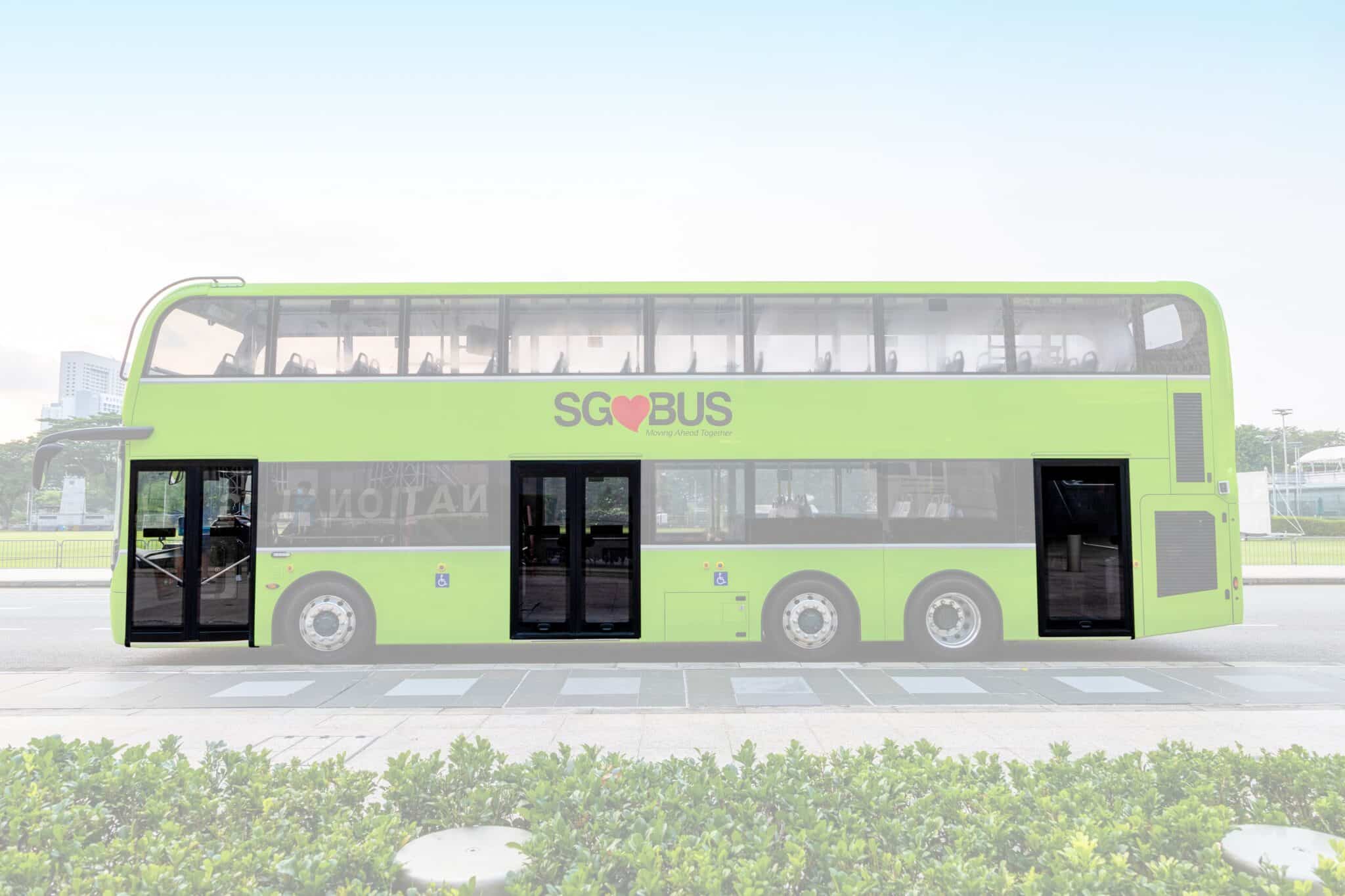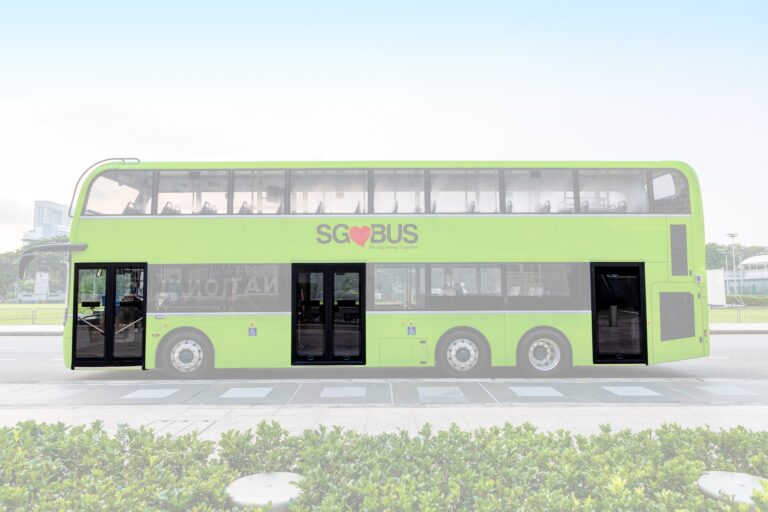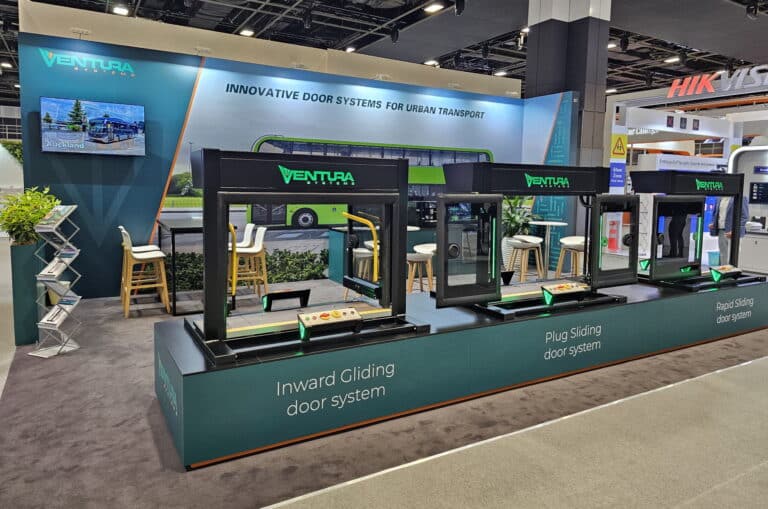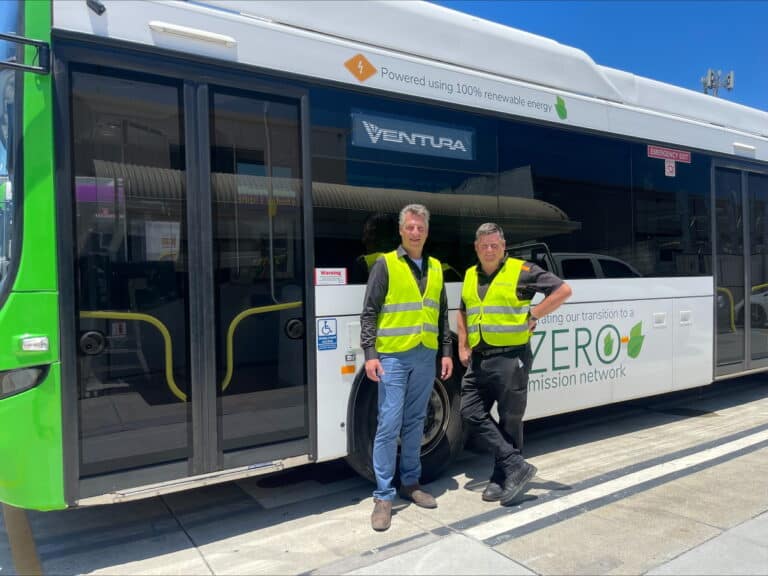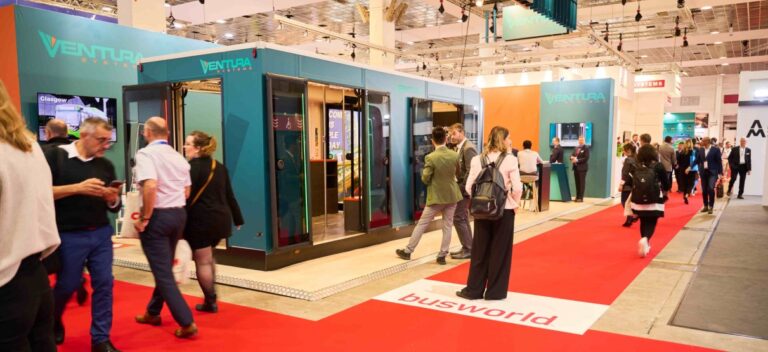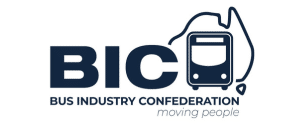This Singaporean Enviro500 double-decker bus is designed for optimal passenger flow, featuring three distinct door systems and two staircases at both the front and rear. Each door system is uniquely tailored and especially chosen to enhance accessibility and efficiency:
Front Door: An inward gliding door system (double leaf).
Middle Door: A plug outward sliding door system (double leaf).
Rear Door: A rapid outward sliding door system (single leaf).
The use of these three distinctive door systems is a special configuration that prompts the question of why this particular setup was chosen. In this article, we highlight the key factors that influence the decision-making process for door system configurations in single-deck and double-decker buses.

Key considerations for operators & OEMs
The door system configuration has a high impact on subjects like cost, passenger flow, safety and accessibility and should not be taken lightly. When selecting the right door system, bus manufacturers (OEMs) and operators evaluate the combination of the following factors:
1. Passenger flow & operational efficiency
Door configuration and passenger flow are closely connected. Efficient passenger flow is key to maximizing vehicle capacity while ensuring quick boarding and alighting. Different types of buses have varying operational goals, which influence their door system choices. For example:
- High-capacity buses (double-deckers, articulated buses) often use a combination of different door types to optimise movement or increase accessibility.
- Bus Rapid Transit systems prioritise outward-sliding doors for the use of all-door-boarding resulting in quick boarding and alighting.
- Urban buses may prefer inward gliding doors for their lower purchase costs.
- Mini buses often favour large rapid sliding or plug sliding doors to maximise accessibility for all users, particularly in urban settings where slow speeds and shared pedestrian zones require easy entry and exit.
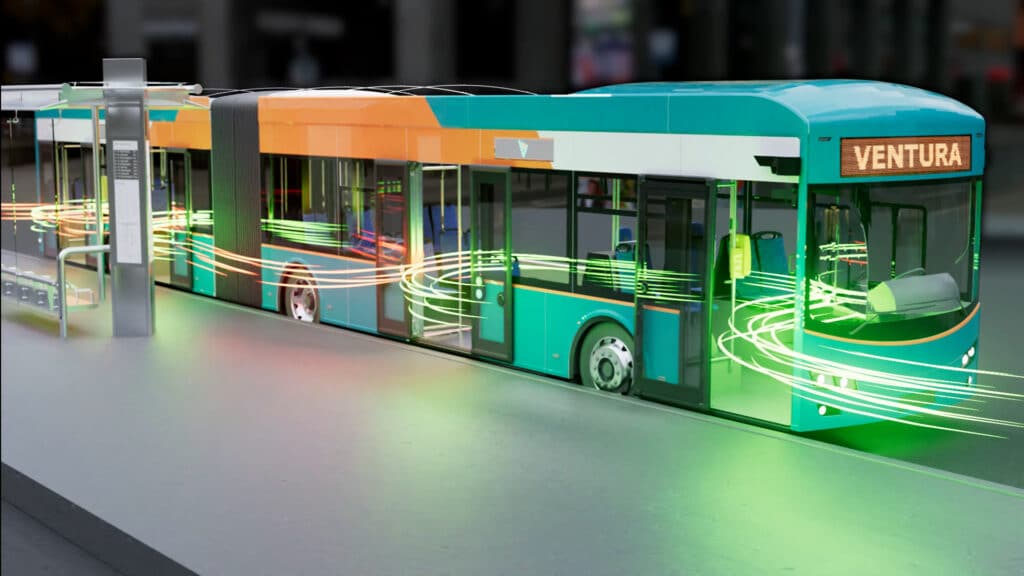
2. Interior and exterior space
- Inward gliding doors require space inside the vehicle, reducing standing room and preventing passengers from standing directly in front of the door for a quick exit.
- Outward-sliding door systems provide a fully unobstructed entryway, enabling efficient all-door boarding where ticketing allows. They also offer OEMs greater flexibility in bus layout and interior design.
- Inward-gliding doors conserve external space and eliminate possible clearance issues with the wheel area—an important consideration for outward-sliding doors.
- When used as the front entry door, inward-gliding doors can narrow the entrance, making boarding less comfortable and potentially contributing to crowding inside the vehicle.
Adding an additional door at the rear of the vehicle can help prevent congestion near the main exit, ensuring passengers make full use of the available seating and standing space. This extra exit enhances passenger flow by allowing more efficient disembarkation at the rear, freeing up space at other doors and improving overall movement within the vehicle. A side note to consider is the impact of adding an extra door system on the effective capacity of the bus.

3. Route & environmental conditions
- On busy routes with high passenger volumes, single-door boarding can significantly increase dwell time at bus stops. Implementing all-door boarding or utilizing door systems that allow simultaneous boarding and alighting can help reduce passenger loading and unloading times, improving overall efficiency and service speed.
- With significant weather conditions (snow, rain, dust) passengers benefit from plug sliding doors due to their better sealing and insulation.
- In climates where air conditioning or heating is important, often is chosen for door systems that can be individually opened, like an inward gliding door, to minimise the space of the opening.
- For buses operating at higher speeds, such as intercity buses, door systems must be designed to withstand these conditions, ensuring proper sealing to minimise noise and prevent wear or deformation of rubber components over time.
4. Safety & accessibility
- Accessibility regulations for wheelchair users, elderly passengers, and those with mobility impairments play a key role in determining door placement and width.
- To ensure barrier-free entry, plug-sliding door systems are often preferred, as they provide a wide opening suitable for both manual and electric wheelchair ramps.
- In smaller vehicles or minibuses, a single-leaf rapid sliding door can offer sufficient space for a ramp when a two-leaf door system is not feasible.
- In public transport, automatic sensors and anti-trap systems are essential for passenger safety. Their design and implementation vary depending on the door system used.
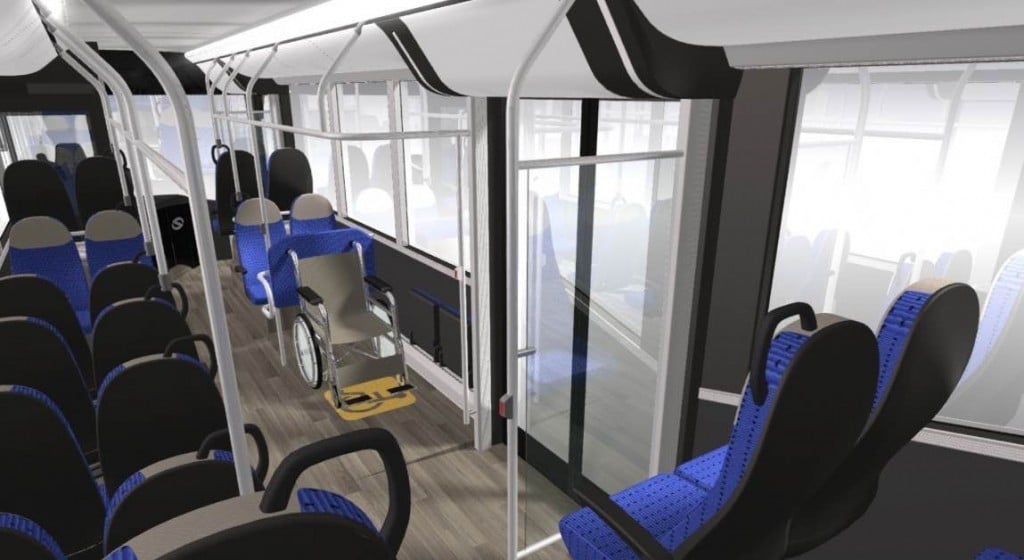
5. Passenger comfort
- The quality and performance of door systems significantly impact passenger comfort. Well-designed and strategically placed doors help reduce dwell time at stops, easing congestion and enhancing the overall travel experience.
- Inward-gliding doors do not provide the same level of sealing as plug-sliding doors, which may result in increased noise levels and greater exposure to external weather conditions.
- Certain door systems offer additional passenger-friendly features, such as LED boarding communication systems, which use green and red lights to indicate when doors are accessible for boarding or exiting.
- The choice between an electric or pneumatic door system affects the sound produced during opening. Electric mechanisms enable quieter door movements, enhancing passenger comfort, especially in urban environments with frequent stops.
6. Cost & maintenance
- Initial costs of Plug Sliding and Rapid Sliding doors are higher, but they offer long-term durability and efficiency.
- Inward-gliding doors generally have lower purchase cost, but they take up interior space and can cause congestion.
- Operating costs (e.g., air conditioning loss due to poor sealing) can be a factor in long-term savings.
- Complexity of technology differs between door systems. New knowledge of skills may need to be adopted by maintenance personnel.
- Pneumatic door systems have a higher life cycle cost than electric door systems. Learn more
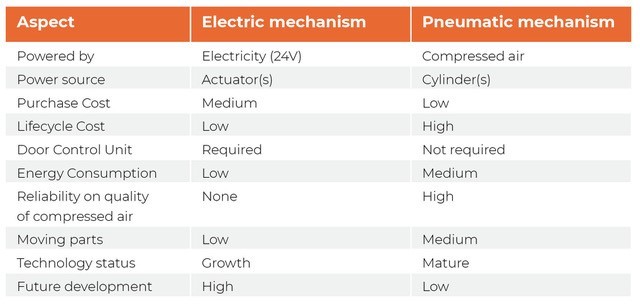
Conclusion: finding the right balance
The choice of a bus door configuration is not just about preference – it directly impacts passenger experience, vehicle efficiency, and operational costs. A well-designed door system ensures smooth passenger flow, safety, and optimal vehicle utilisation.
Bus OEMs and operators must carefully assess their routes, passenger volumes, and urban conditions to determine the most effective combination of inward gliding and outward sliding doors. The right configuration leads to faster service, lower maintenance costs, and improved rider satisfaction, all of which are essential in today’s public transport landscape.
We summarised the most important benefits for each door systems, with a video to support our story:
Inward Gliding door system
How it works: the door panels slide inward into the bus body when opening.
Advantages:
- Proven technology as one of the standards in the market.
- Door leaves can be operated separately from each other.
- Lower purchasing cost.
- Compact design.
Challenges:
- Takes up interior space inside the vehicle, limiting seating or standing areas.
- Sealing is not as good as outward sliding doors resulting in more noise, ingress, and influence from weather conditions.
- System is not as refined as other door systems.
Plug & Rapid Sliding door system
How it works: these doors slide outward before sliding along the bus body (plug-sliding).
Advantages:
- Maximises interior space: keeps the inside of the bus clear for passengers.
- Faster boarding & alighting: passengers don’t need to step back to allow the door to open, improving flow.
- Better sealing & insulation: plug-sliding doors create a tighter seal, reducing noise, ingress, and influence of weather conditions.
Challenges:
- Requires external clearance: buses must ensure no obstacles (e.g. mirrors or wheel alignment) interfere with the door’s movement.
- Higher initial costs: The mechanical complexity of plug-sliding doors can increase upfront investment and maintenance costs.
Personal advice for your door systems?
For more details about our innovative door systems for urban transport, visit www.venturasystems.com or reach out to our representatives at +31 515 577 750 or via email at [email protected].
